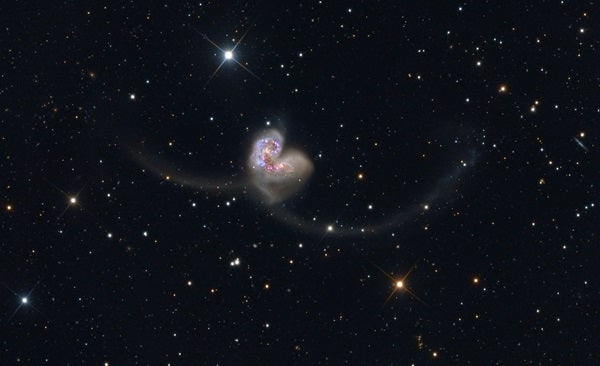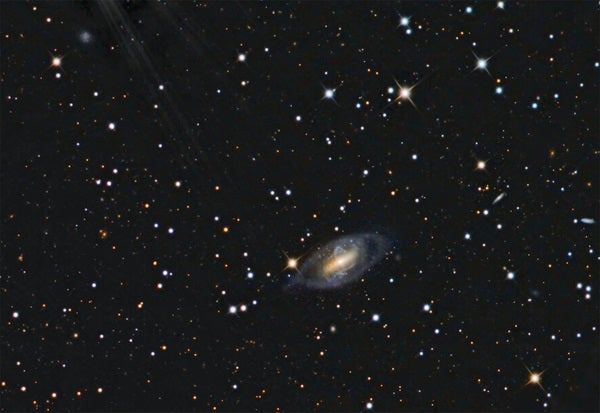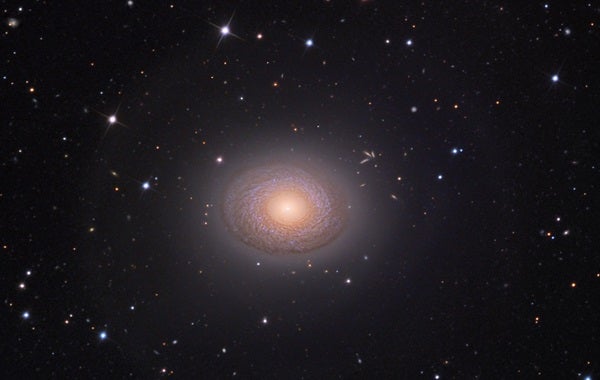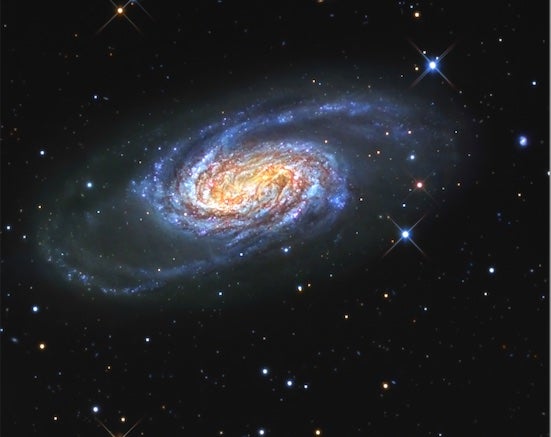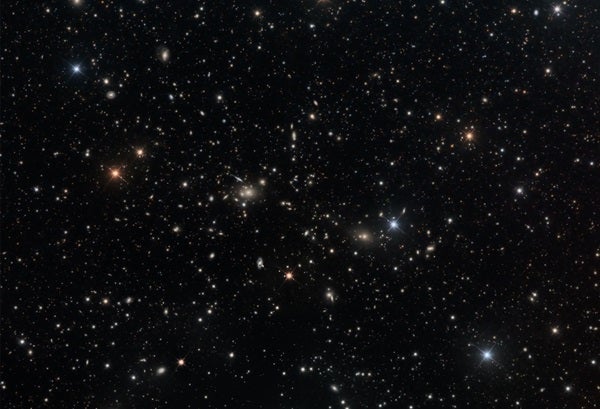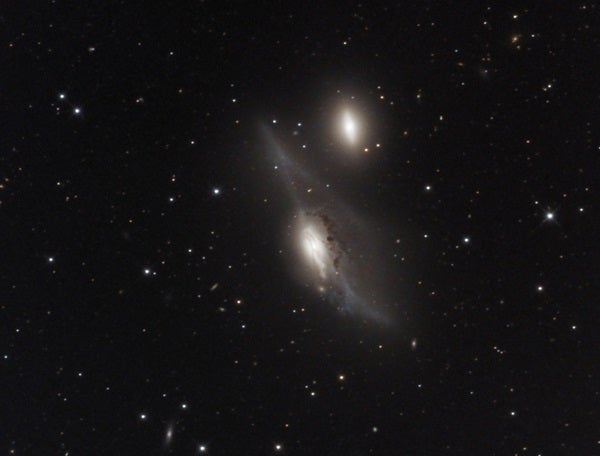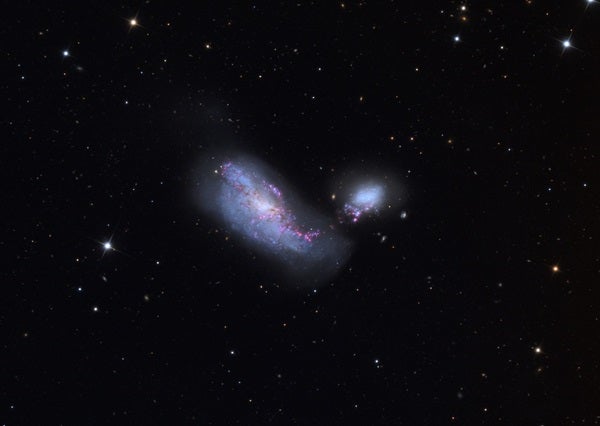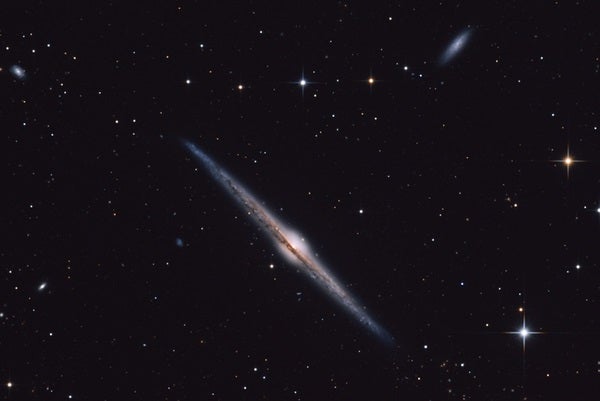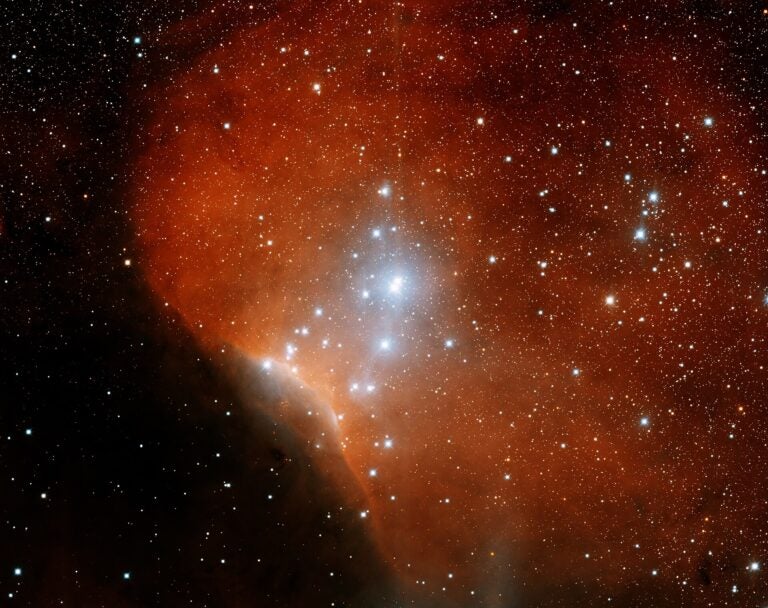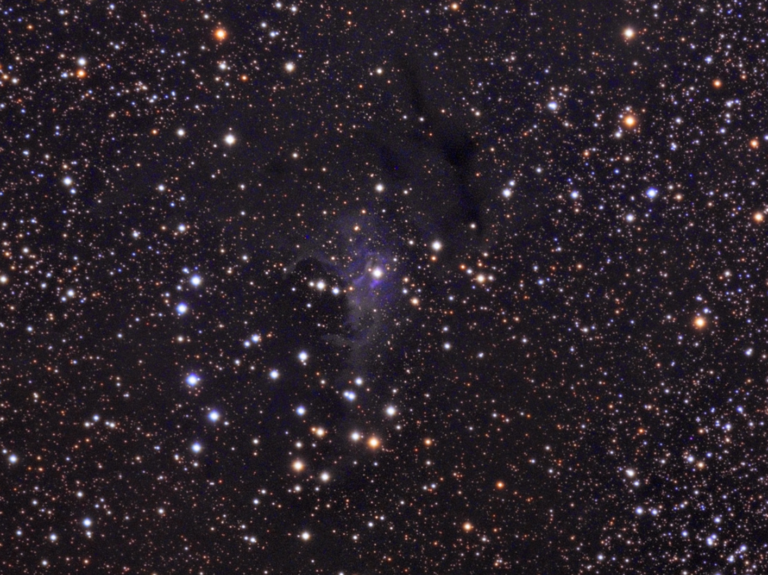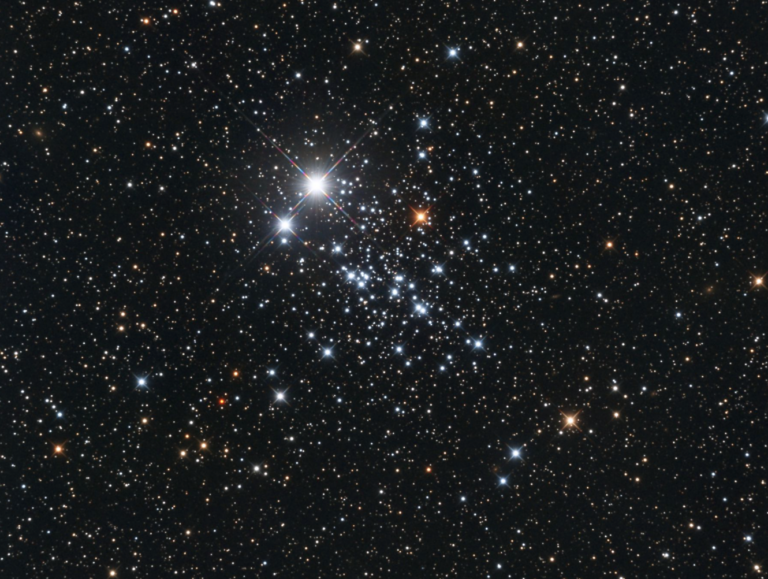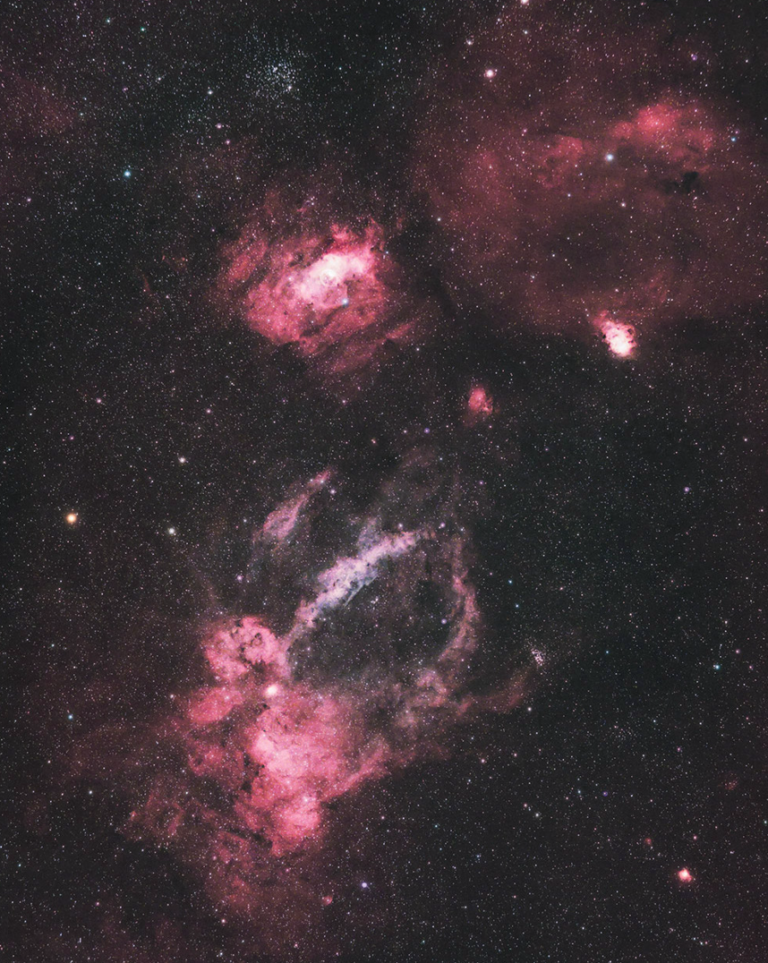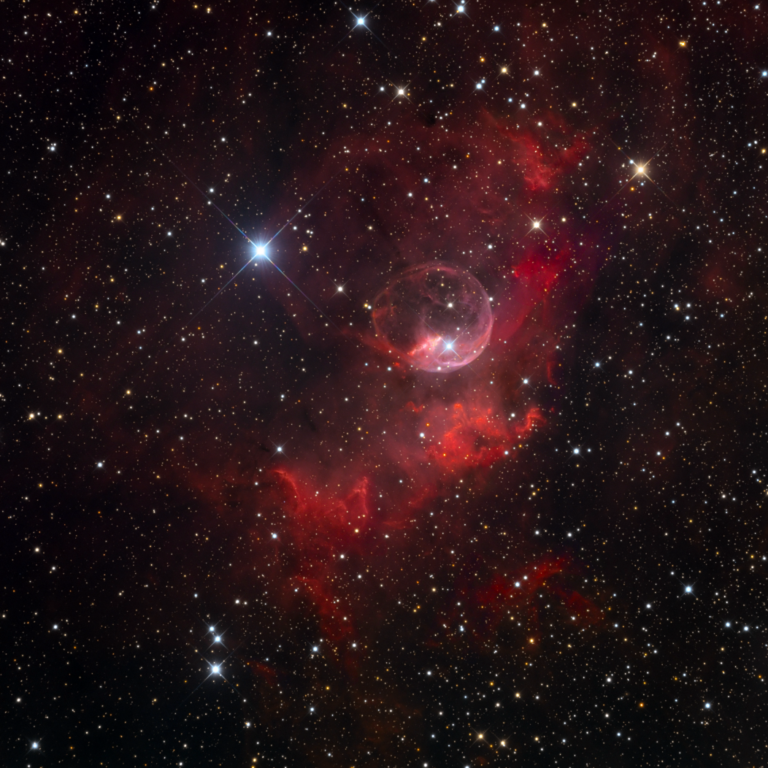This year, there are two windows to run a Messier marathon: a few days around New Moon (March 2), and from sunset until the Moon rises around Last Quarter (March 24) through New Moon (April 1). But if you’ve done the Messier marathon once — or multiple times, as I have — you might enjoy a different list of deep-sky treats to track down instead when the Moon isn’t in the evening sky.
My alternate list has objects for telescopes of all sizes. Objects are ordered by their right ascension, so the ones at the beginning rise around sunset in early March and are highest around midnight, or 1 a.m. when daylight saving time takes effect March 13.
The descriptions are short because of limited space, but that doesn’t mean you should just take a quick glance and move on. Get comfortable, spend some quality time with each object, and you’ll have at least as much fun as your friends who are stuck trying to figure out which M object they’re staring at in the Virgo Cluster.
Start the non-marathon
The first object is the Helix Galaxy (NGC 2685), a magnitude 12.7 spiral in Ursa Major. You’ll find it 3.8° east-southeast of Muscida (Omicron [ο] Ursae Majoris). At low magnifications, you’ll see a disk-shaped glow twice as long as it is wide (4.9′ by 2.4′). To see the ephemeral ring that gives the galaxy its common name, you’ll need a 14-inch scope.
Next up is NGC 2768, also in Ursa Major. It glows at magnitude 9.9 and measures 6.4′ by 3.0′. Some references classify this galaxy as elliptical, but it’s lenticular, with a clear disk. NGC 2768’s core and outer halo are evenly illuminated.
Now head to Cancer and NGC 2775. This is a magnitude 10.1 spiral with dimensions of 4.6′ by 3.7′. Through an 8-inch scope, it looks oval. A 12-inch scope at 250x reveals the outer halo.
Our next target, the magnitude 10 spiral NGC 2784 in Hydra, lies 1.9° north-northeast of Kappa (κ) Pyxidis. Through an 8-inch scope, you’ll see a stretched core surrounded by a similarly shaped halo. It measures 5.5′ by 2.4′.
No. 5 on this list, NGC 2787 in Ursa Major, is a bit of an odd duck. Astronomers classify it as a barred lenticular galaxy. It glows at magnitude 10.9 and measures 3.1′ by 1.8′. Through a 12-inch or larger scope, you’ll see the bar, but its long axis tilts a bit relative to the long axis of NGC 2787.
Next up is gorgeous NGC 2841, a magnitude 9.3 spiral in Ursa Major. Look for it 1.8° west-southwest of Theta (θ) Ursae Majoris. It measures 8.1′ by 3.5′. Through an 8-inch scope, you’ll see several dark regions in its spiral arms, but the arms themselves are tough to see.
Leo contains many fine galaxies, five of which made Messier’s list. Don’t overlook NGC 2903, however, which shines brighter (magnitude 9.0) than any of that quintet save M66. It measures a worthy 12.0′ by 5.6′. Through a 10-inch scope, look for a halo that surrounds a bright core. Be patient and look closer for the central bar and the spiral arms. Larger scopes show dust lanes and emission nebulae throughout NGC 2903’s arms.
Next up is irregular galaxy Sextans B. To find this object, aim 6° north-northwest of magnitude 4.5 Alpha (α) Sextantis. Through a 12-inch scope, you’ll see a magnitude 11.3 rectangular (5.5′ by 3.7′) smudge of light dotted by faint foreground stars. Can you tell that the central region is ever-so-slightly brighter?
Look for the next target, magnitude 10.9 barred spiral NGC 3079, 2.2° northeast of Phi (φ) Ursae Majoris. I love observing galactic “splinters,” and NGC 3079 appears more than five times as long as it is wide (8.0′ by 1.5′). Through a 12-inch scope at 300x, the bright center stretches two-thirds of the galaxy’s length.
Not only is the Spindle Galaxy (NGC 3115) the showpiece of Sextans, at magnitude 8.9 it’s one of the sky’s brightest galaxies. Through a 4-inch telescope, you’ll see an object four times as long as it is wide (8.1′ by 2.8′) with a bright center. Through a 12-inch scope at 300x, the core looks more distinct, surrounded by an oval bulge.
Our next target is dwarf spheroidal galaxy Leo I. It’s easy to find, only 20′ due north of Regulus (Alpha Leonis). But that brilliant star’s glare through the eyepiece makes Leo I difficult to see, so keep Regulus outside the field of view. At a dark site, an 8-inch telescope at 150x reveals a uniform, magnitude 10.2 mist measuring 12.0′ by 9.3′.
Follow Leo I with the Little Pinwheel Galaxy (NGC 3184) in Ursa Major. It glows at magnitude 9.8 and measures 7.8′ by 7.2′. This is a gorgeous galaxy through a large scope. NGC 3184 has wide arms, so use high power — above 400x — to spot the dark regions that divide them from the nucleus.
Next up is the spring sky’s showpiece planetary nebula, the Ghost of Jupiter (NGC 3242) in Hydra. With a magnitude of 7.8, it’s bright. At low power through a 6-inch scope, you’ll see the 16″-wide, blue-green disk. Through larger scopes, and at powers in excess of 200x, the center looks like an eye surrounded by a faint spherical shell 40″ across. For best results, use a nebula filter.
Although our next object is called Coddington’s Nebula (IC 2574), it’s a magnitude 10.4 spiral galaxy in Ursa Major. Look for it 5.7° west of Lambda (λ) Draconis. Through an 8-inch scope at 75x, it appears twice as long as it is wide (13.5′ by 8.3′). The central region glows a bit brighter and looks offset to the southwest.
Although you’ll need to head to Leo Minor for the Sliced Onion Galaxy (NGC 3344), the best way to find it is to look 6.3° east-northeast of Zeta (ζ) Leonis. This spiral glows at magnitude 9.9 and measures 6.9′ by 6.4′. An 8-inch scope shows a bright core. Double the aperture and NGC 3344’s many arms wind tightly around the core, making the galaxy appear circular.
Our next target is spiral galaxy NGC 3521 in Leo. Because it lies just 28 million light-years away, it appears big (12.5′ by 6.5′) and bright (magnitude 9.0). NGC 3521 sits in a small region of Leo between Sextans and Virgo 4.5° northwest of Phi Leonis. Through a 10-inch telescope, you’ll see the bright, extended core surrounded by a diffuse halo. With a 16-inch scope, NGC 3521 will look nearly twice as long as it does through the smaller instrument.
Drop south to Hydra for the Frame Galaxy (NGC 3621), a magnitude 8.9 spiral that lies 3.3° west-southwest of Xi (ξ) Hydrae. This object is twice as long as it is wide (9.8′ by 4.6′) with a broad, evenly lit core. The halo, however, reveals mottling, which suggests spiral structure. NGC 3621’s common name comes from a parallelogram of stars that surrounds it, making the galaxy appear framed.
Can you access a large scope? You’ll need one for the Leo Galaxy Cluster (Abell 1367). This cluster spans 1.6° mainly to the southwest of the star 93 Leonis. At 330 million light-years away, the galaxies’ light appears faint, but a 10-inch or larger scope will wrangle a couple dozen members. For example, the centrally placed, nearly 1′-wide glow of magnitude 11.8 NGC 3842 shows up nicely through an 8-inch telescope at a dark site. Others you’ll be able to spot include magnitude 12.7 NGC 3861, magnitude 12.7 NGC 3862, magnitude 13.3 NGC 3837, and magnitude 13.7 NGC 3840. To guarantee success, a good finder chart of this cluster is a must.
Next up is a pair of interacting galaxies in Corvus that astronomers refer to as the Antennae Galaxies because of their bright tails. The two are NGC 4038 and its companion NGC 4039. They have a combined magnitude of 10.5 and span 5.4′ by 3.9′. To find them, look 3.6° west-southwest of Gienah (Gamma [γ] Corvi). A 4-inch telescope at a dark site will reveal two faint, cottony smudges. The larger and brighter smudge, NGC 4038, sits to the northwest. A 12-inch scope at 200x shows both oval cores roughly twice as long as they are wide. If the seeing is good, double the power and you’ll see bright and dark knots and traces of at least one tidal tail.
Now point your scope 1.5° west of magnitude 3.9 Kappa Draconis. There you’ll find the magnitude 9.6 barred spiral NGC 4236. While that magnitude may seem bright, this galaxy is so huge (21.0′ by 7.5′) that its surface brightness is low, so you might not see it through anything smaller than a 10-inch scope. That aperture reveals a ghostly mist three times as long as it is wide. Larger scopes reveal a few faint star-forming regions. The brightest lies at the south end of the spindle.
Have I mentioned Canes Venatici yet? Although its stars are faint, it contains many bright galaxies. Four made Messier’s list — M51, M63, M94, and M106. And although the Silver Needle Galaxy (NGC 4244) isn’t as bright as those luminaries, it’s well worth a look. It glows at magnitude 10.4 and measures 17.0′ by 2.2′. Its disk is edge-on, tilting only 5° to our line of sight. Its length is relatively evenly illuminated, with a slightly brighter core. View NGC 4244 through a 4-inch scope from a dark site, and you’ll understand why its name contains the word needle.
Next up is another galactic pair called The Eyes (NGC 4435 and NGC 4438), which lie in Virgo. Together, they glow at magnitude 10.0 and measure 8.5′ by 3′. Although you’ll spot this duo through small scopes, it will take at least a 12-inch telescope to coax out any details. To find The Eyes, look 8.5° west of Vindemiatrix (Epsilon [ε] Virginis). You’ll most likely first spot M86. Your target is 0.4° east of that galaxy. NGC 4438 is the more distorted galaxy of the two. Crank up the power and try to spot this object’s irregular outer regions.
I think you’ll like our next object, the irregular galaxy NGC 4449. Look for it 2.9° north-northwest of Chara (Beta [β] Canum Venaticorum). It glows at a worthy magnitude 9.6, but it’s the high surface brightness that makes this target easy to observe. Through an 8-inch telescope, you’ll see NGC 4449’s unusual rectangular shape (5.5′ by 4.1′). It has a bright nucleus that also looks rectangular. Crank the magnification past 250x and examine the irregular halo outside this galaxy’s core.
Stay in Canes Venatici for the Cocoon Galaxy (NGC 4490), a magnitude 9.8 barred spiral that measures 6.4′ by 3.3′. It lies 0.7° west-northwest of Chara. Through an 8-inch scope, you’ll see an irregularly bright oval halo (the “cocoon”) surrounding a bright core. If your sky is steady, look 3′ north of NGC 4490’s western end for its magnitude 12.5 companion, irregular galaxy NGC 4485.
I’ll end this list with a great target: the Needle Galaxy (NGC 4565) in Coma Berenices. In my opinion, this is the sky’s finest edge-on spiral. It glows at magnitude 9.6 and measures 14.0′ by 1.8′. An 8-inch scope shows a streak roughly 10′ by 1.5′ oriented northwest to southeast. A dust lane runs the length of this object, and the small bulge of the core is the easiest place to spot it.
It’s OK to observe the objects on Messier’s list many times. As this brief list proves, however, there are many other worthy targets that await your viewing pleasure. Good luck!

